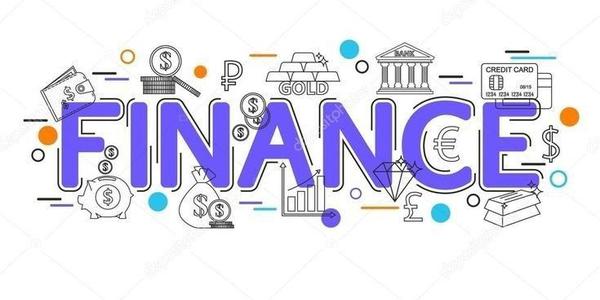Welcome to our comprehensive crypto glossary. Below, you will find definitions of key terms that are essential for understanding the world of cryptocurrencies. Each term is explained in detail, with examples where applicable.
A
Abundance
In crypto trading, abundance refers to a situation where there is an oversupply of an asset on the market, often due to factors like inflation or poor economic performance. This can lead to a decrease in its value as investors seek safer alternatives.
Activity Ratio
The activity ratio measures the level of trading activity for a particular cryptocurrency or exchange platform. It indicates how active the market is and can help traders gauge potential price movements.
B
Backlash
Backlash occurs when a strategy, such as pump and dump, reaches its target price but fails to sustain it, causing the asset’s price to drop rapidly in a sell-off.
C
Compound Annual Growth Rate (CAGR)
CAGR is a measure of an investment’s average annual growth rate over a specified period. It smooths out the volatility of returns and provides a clear picture of long-term performance.
D
Drawdown
A drawdown refers to the decline in the value of an investment, portfolio, or trading account from its peak to its trough. In crypto trading, it is often measured as a percentage of the maximum equity reached.
E
Envelope Trading
Envelope trading involves plotting a range of prices around a central tendency and trading based on deviations from that range. It is commonly used in pairs trading strategies.
F
Floor Limit
A floor limit is an order set at the lowest price at which a buyer is willing to purchase an asset. It helps prevent market makers from taking large positions close to the offer side of the book.
G
Gap Fill
A gap fill occurs when there is no trading activity following a significant price gap, causing the price to continue in the same direction as the previous move.
H
Hedging
Hedging is a strategy used to reduce risk by offsetting potential losses from one investment with gains from another. In crypto trading, this can involve positions in related assets or derivatives.
I
Impermanent Loss
An impermanent loss occurs when users swap their cryptocurrencies on an exchange without holding them for confirmation. This risk is inherent to decentralized exchanges (dEXes) and can lead to significant losses if prices drop after the trade is made.
J
Jacking in/Out
Jacking in refers to the act of placing a large position in a trading instrument before exiting an existing position, while jacking out involves exiting a position before placing a new one. Both strategies are often used in swing trading.
K
Keynesianism
Keynesian economics emphasizes the role of aggregate demand in driving economic growth and suggests that government intervention can help stabilize markets during downturns. In crypto, this might involve strategies to support price levels during bearish periods.
L
Leverage
Leverage amplifies both potential gains and losses in trading or investing. In crypto, leveraged tokens (like杠杆 token) allow users to control larger positions with a smaller initial investment.
M
Margin Trading
Margin trading involves borrowing funds from a broker to increase the potential returns of a trade. It is commonly used in futures contracts and can lead to significant risks if not managed properly.
N
Net Unrealized Profit/Loss (NUPL)
NUPL measures the difference between the market value of assets held by investors and their cost basis. It provides insight into whether investors are net long or short positions based on unrealized profits or losses.
P
Pump and Dump
A pump and dump scheme involves buying a large amount of an asset with the intent to sell it at a higher price, thereby making a profit from the initial buyers. This strategy is often used by larger investors aiming to capitalize on market sentiment.
Q
Quantitative Easing (QE)
QE refers to central banks purchasing large quantities of government bonds and other financial instruments to boost economic activity, lower interest rates, and stabilize markets during crises.
R
Risk-Return Tradeoff
The risk-return tradeoff is the principle that higher potential returns are associated with higher levels of risk. In crypto trading, this means taking on more volatile assets or strategies to achieve higher rewards.
S
Short Selling
Short selling involves borrowing shares of a security from a broker and selling them in anticipation of a price decline. The investor borrows the shares at an agreed-upon price and returns them later if the price has fallen, profiting from the difference.
T
Technical Analysis
Technical analysis is a method of evaluating assets by studying past market data, such as price movements and volume trends. Traders use this information to predict future price actions.
U
Underlying Asset
An underlying asset refers to the security or commodity that an option contract is based on. In crypto trading, this could be a specific cryptocurrency like Bitcoin (BTC) or a derivative such as a leveraged token.
V
Volume
Volume represents the number of units of an asset that change hands over a specified period. It is a crucial indicator of market strength and sentiment.
W
Window dressing
Window dressing refers to actions taken by traders to mislead or manipulate the trading process, such as hiding trades or manipulating prices temporarily before closing them.
X
XAU/USD (Gold Standard)
XAU/USD represents gold denominated in U.S. dollars. It is often used as a hedge against inflation and serves as a store of value, with significant price movements influenced by global economic conditions.
Y
Yield Curve
The yield curve shows the interest rates associated with debt instruments across different maturities. In crypto, it can be used to gauge investor sentiment regarding future market conditions.
Z
Zero Balance Account (ZBA)
A zero balance account is a type of margin account that allows users to trade without maintaining a minimum balance requirement. It is often used in futures trading for increased flexibility.
This glossary covers key terms essential for understanding cryptocurrencies and blockchain technology. Traders and investors should familiarize themselves with these concepts to make informed decisions in the ever-fluctuating crypto market.










